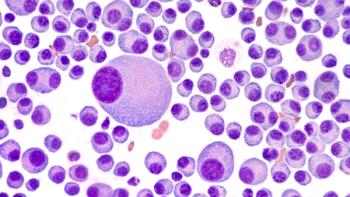
The Economic Burden of Diabetes
Diabetes has become both an economic and a health crisis. Prevention programs directed at high-risk patients are needed now more than ever.
Diabetes is a national problem—one that touches so many Americans that it has become both an economic and a health crisis. The Centers for Disease Control and Prevention (CDC) estimates that nearly 26 million people have diabetes, and another estimated 79 million adults have prediabetes. These extraordinarily high numbers represent a significant increase over the past few years, especially for the prediabetes category. In 2008, the CDC estimated that 23.6 million Americans had diabetes; the prediabetes number was at 57 million. The implications are alarming—this means that more people will possibly develop diabetes, and health care costs will soar.
In a recent study, the CDC projected that as many as 1 in 3 US adults could develop diabetes by the year 2050 if current trends continue. This would double or triple the amount of individuals with diabetes. And the age group most affected and with the highest number of new cases diagnosed in 2010—adults aged 45 to 64 years—also foreshadows what the future might hold. Health professionals will need to tackle this concern with more patient education, prevention, and research. Pharmacists know that this growth in diabetes will only further complicate drug interactions as more patients present with multiple health problems.
“These are alarming numbers that show how critical it is to change the course of type 2 diabetes,” said Ann Albright, PhD, RD, director of the CDC’s Division of Diabetes Translation. “Successful programs to improve lifestyle choices on healthy eating and physical activity must be made more widely available, because the stakes are too high and the personal toll too devastating to fail.” Proper diet, physical activity, and effective prevention programs directed at groups at high risk of type 2 diabetes can considerably reduce future increases in diabetes prevalence, but will not eliminate them, the report says.
But that’s only one side of the problem. The economic toll could be astounding in future years and we should take heed. With the mess currently enveloping Washington and the country as Obamacare rolls in, we cannot afford to ignore the reality of diabetes. Already, the cost of diabetes care is estimated at $174 billion annually, including $116 billion in direct medical expenses. Research from Health Affairs showed that the US national economic burden of diabetes and prediabetes reached $218 billion in 2007.
What’s the answer? Keeping Washington accountable and looking for less, not more, government intervention in the nation’s health care. As Thomas Paine said so many years ago, “Government, even in its best state, is but a necessary evil; in its worst state, an intolerable one.” With the ability of pharmacists and other health care professionals to see what is happening in their communities and make a real difference (see
Thank you for reading!
Newsletter
Stay informed on drug updates, treatment guidelines, and pharmacy practice trends—subscribe to Pharmacy Times for weekly clinical insights.




















































































































































































































